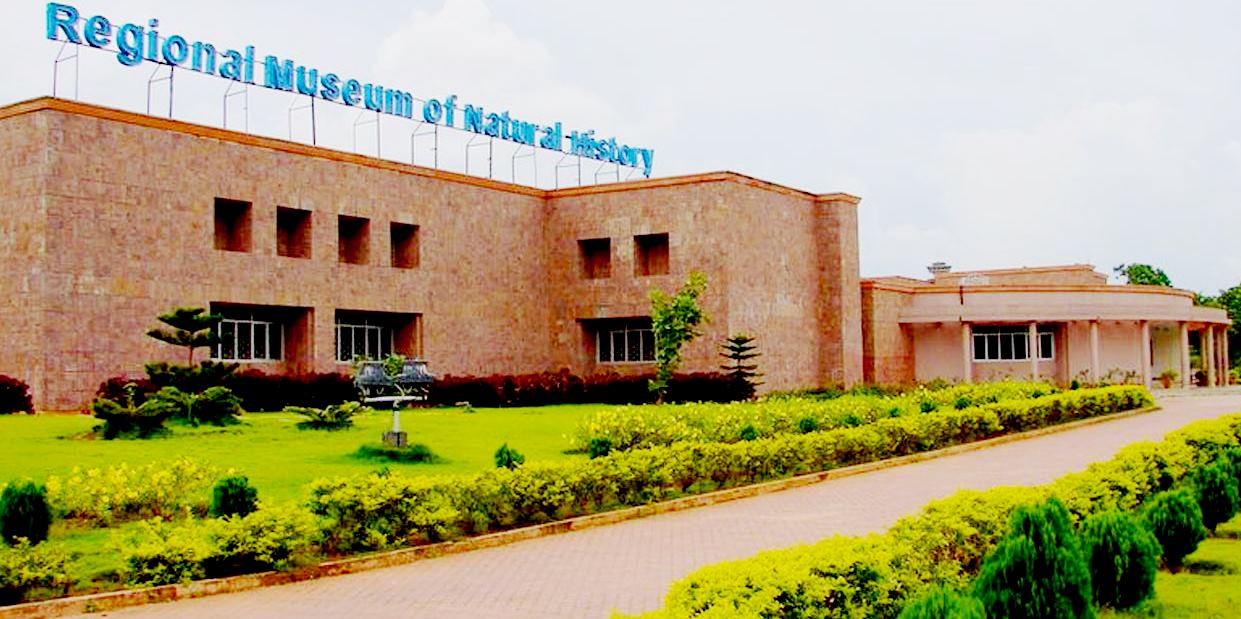The Regional Museum of Natural History near Acharya Vihar square in Bhubaneswar exhibits plants, animals, and geology mainly of the eastern region of India. Inaugurated in 2004 it has been undertaken by the Ministry of Environment and Forests, Government of India. The galleries emphasize the conservation of nature and natural resources while depicting ecological interrelationship among plants and animals.
At the entrance of the museum, the first thing one can see is the skeleton of an elephant placed inside a huge glass box. One can also see that a bullet was stuck near its neck portion. Asked about it the interpreter of the museum (for osteology) Baishnav Charan Parida narrated about it.
The elephant was named as Shankar. Parida said, “Shankar’s life is a glaring example of man-elephant conflict which often ends up in loss of many innocent lives for no one’s mistake. It is believed that on 27 February 2006 three elephants strayed from Chandaka Damapara wildlife sanctuary and went to Barunei hills near Khurda. Shankar was one of these elephants. As per reports it killed two persons and injured one and later was tranquilized under the supervision and professional care by experienced forest officials. It was finally captured and tied with an iron chain. However, on March 2, 2006, it broke the open chain and entered into village forest. On March 5, a 30-year-old captive female elephant (along with a 5-year-old baby elephant) was brought from Similipal to tame Shankar.

Aggressive Shankar slowly came closer to the other. Later it was trans-located to Kumarkhunti at Chandaka Forest in standing sedation in a truck and was set free. Since then many news came about Shankar and finally the tusker breathed its last on May 17, 2006. Now, it was the task of the museum. The museum authority and Forest department decided to display Shankar in a lively way even after its death for education and research purpose.
A country-made ball like bullet weighing 32 gram was recovered from the inner part of the second vertebra while cleaning the bone. The bullet was embedded inside the rib. As there is no evidence of poaching elephant for ivory, it is presumed that the bullet was shot in its early childhood by a poacher who has taken a shot mistakenly with some other animal like wild boar or deer for meat. In the museum the bones were systematically isolated, boiled cleaned and chemically treated for its restoration and further articulation. Finally, on 10 August 2006, the skeleton of Shankar was displayed and opened for public view at the RMNH.
A skeleton of baleen whale has also been installed in the museum, which is supposed to be largest for any museum in India. Parida intimated the whale is of 47.1 feet. It was brought from Gopalpur. After removal of the flesh, the skeletal system was breached. “We bleach either with sodium hydroxide, phenol or carbolic acid. The skeleton was exhibited in 2012,” he said.
Besides the Shankar and the baleen whale, there are many more things to witness at the museum. Museums have always become the source of knowledge thanks to its precious exhibits collected, preserved, documented and exhibited in the galleries. There are luring objects for people of all age groups and all categories including from a school student to a researcher, kept in the glass boxes of RMNH. The exhibits mostly offer edutainment, a blend of education and entertainment.
Also read: Top 10 Offbeat Places To Visit In And Around Bhubaneswar




 Ms Kalinga
Ms Kalinga